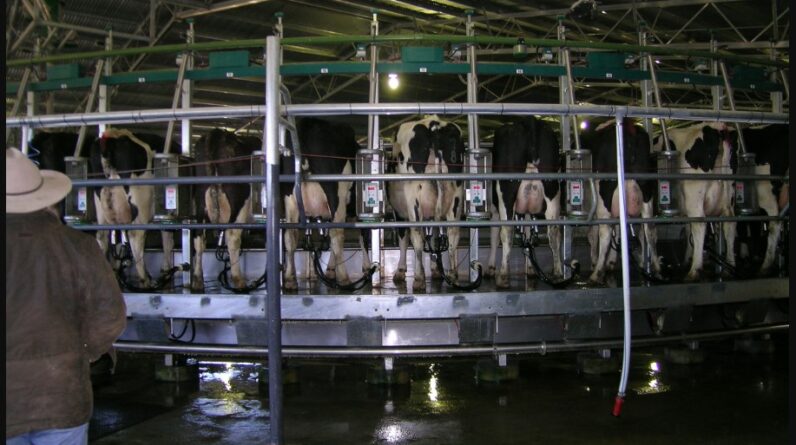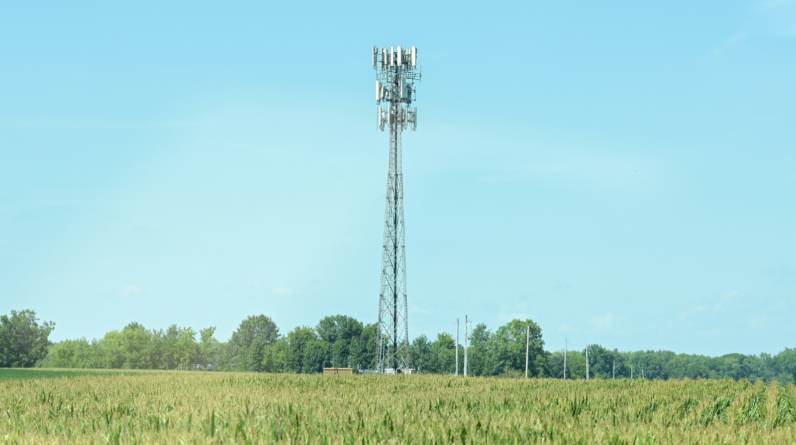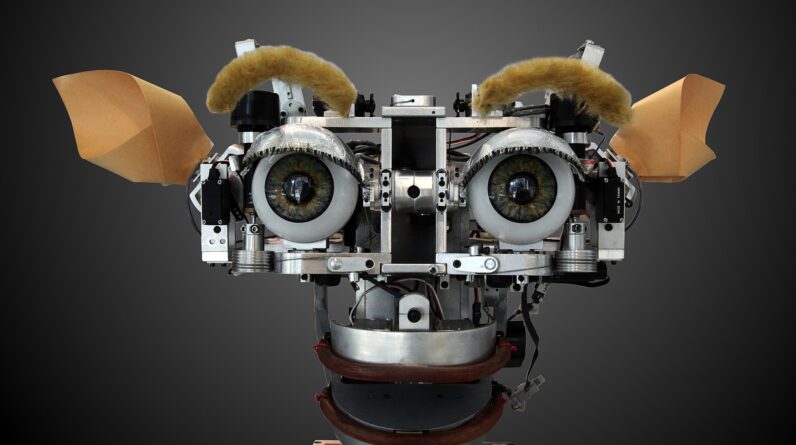
[ad_1]
This 80-stand rotary dairy in Northern Tablelands, New South Wales, is fully computerised and records milk production and conductivity and can detect any abnormalities like mastitis. It then automatically drafts those cows into a separate pen.
Source – Cgoodwin, CC SA 3.0.
In the U.S. and other developed countries, many farmers are embracing technology during the extreme heat brought on by climate change.
Over one-third of the heat-trapping gasses cooking our planet comes from growing and raising farm animals, but millions of cattle, pigs, and other animals get to stay cool in the United States and other parts of the developed world.
The growing problem of more intense summer heat means farmers face animal heat stress that can result in billions of dollars in lost revenue for farmers and ranchers if not properly managed.
In richer countries, technology offers many ways to insulate and cool farm animals and yet, inadvertently adds another way global warming exacerbates the gap between wealthy and poor nations.
Livestock producers in other parts of the world can’t adopt high-tech measures to beat the heat as easily as farmers in the U.S.
CTV News Canada notes that the U.S. is the world’s largest producer and consumer of beef by volume. But U.S. consumers are drinking less milk and eating more cheese, so government programs still support dairies across the country.
A 2022 study in the Lancet Planetary Health journal found that cattle heat stress losses will be far greater in most tropical regions than in temperate regions, due to higher climate impacts and the relatively higher price of measures to adapt to climate change.
Cooling pads for pigs
It only takes a temperature of 80 degrees Fahrenheit for conditions to become critical for some pigs; they don’t have sweat glands and, as a result, are especially vulnerable to heat stress.
In factory farms, producers can adjust ventilation and use sprinklers to keep pigs alive. But during extreme heat, fans can only do so much.
 Robert Stwalley, assistant professor in the Department of Agricultural and Biological Engineering at Purdue University, shows a cooling pad designed to keep sows more comfortable during farrowing. The pads have been licensed to Innovative Heating Solutions of Winnipeg, Manitoba. Source – (Purdue Agricultural Communication photo/Tom Campbell)
Robert Stwalley, assistant professor in the Department of Agricultural and Biological Engineering at Purdue University, shows a cooling pad designed to keep sows more comfortable during farrowing. The pads have been licensed to Innovative Heating Solutions of Winnipeg, Manitoba. Source – (Purdue Agricultural Communication photo/Tom Campbell)
US-based Purdue University developed personal pig cooling pads, to help them cool down while feeding the litters which are bigger every year. Allan Schinckel, professor in the Department of Animal Sciences at Purdue University says that “With increased litter size, sows increase milk production, and they have to eat more feed to produce that milk. That increases body temperature. Modern sows produce 55-70% more heat than sows of the early 1980s.”
The cooling pads were developed by Prof Schinckel and Robert Stwalley, assistant professor in the Department of Agricultural and Biological Engineering.
They measure 0.6 m (2 ft) by 1.2 m (4 ft) and consist of aluminum tread plates on top of copper pipes that circulate water. Since there is only room for the sow on the pad, piglets that need to stay warm are off the edge while they feed. Sensors in the pad can determine if the sow is getting too hot and circulate new water, cooling the pad again.
“We have to keep the barns in certain conditions for the piglets or just from an environmental energy standpoint. We can’t air condition pig barns,” Mr Stwalley said. “But we can provide a conductive path under the pad that is enough to cool the animal, but isn’t economically or environmentally counterproductive.”
Keeping cattle cool
Generally, with livestock, it is important to provide plenty of water and avoid moving them around during the hottest parts of the day. It’s also important to provide plenty of natural resources, such as water and shade, so that they are not overcrowded.
Dairy cattle need a bit of extra care. Heat stress occurs when cows have more heat than they can get rid of, which leads to more stress, lower milk production, and a higher rate of diseases.
Temperature and humidity levels determine when a cow may start feeling heat stress. And letting heat stress get out of hand can result in a loss of money and leave a farmer with a sick cow.
Cows begin to experience heat stress at much lower temperatures than humans. In general, mild heat stress starts around 72° F with 50 percent humidity. So, the next question one might ask is – How do you tell if a cow is heat-stressed?
Some farmers, seeking ways of keeping their animals healthy are adopting or planning to adopt automated, high-tech solutions like cow pedometers, computerized file systems and diagnostic tools, more advanced artificial insemination techniques, robotic cleaning devices, and more.
One such high-tech idea is the Fitbit for dairy cows. It is sort of like Fitbit devices used by humans to track their health. Researchers at Tarleton State University’s Southwest Regional Dairy Center in Stephenville, Texas developed the device that is attached to a cow’s collar.
The devices track how long cows eat, how long they lay down and how many steps they take, while another wearable device monitors how much milk each cow gives.
“We have two Fitbits on every cow,” Southwest Regional Dairy Center Director Barbara Jones said in the press release. “They help us to monitor their health, and to keep them content. And that matters to us because we truly do care about cows, as all producers do.”
The data can warn producers that a cow may be sick before the cow starts showing symptoms. The devices also free up time for the dairy producer, who can tend to other business instead of monitoring their herd visually, according to the press release.
Dr. Michelle Schack, a dairy veterinarian based in Arizona, said that the farmers she works with are well-prepared for the blistering heat the state has seen this year, because as research on animal health has improved, they’ve invested in infrastructure.
But it costs a lot. “Fans and misters, let’s not forget, are hugely expensive, not only to install but the amount of electricity they take is insane,” Schack said.
It is almost to a point where protecting a farming investment and still trying to be environmentally sustainable are at odds with each other. said Jackie Boerman, an associate professor in the Department of animal sciences at Purdue University.
[ad_2]
Source link






